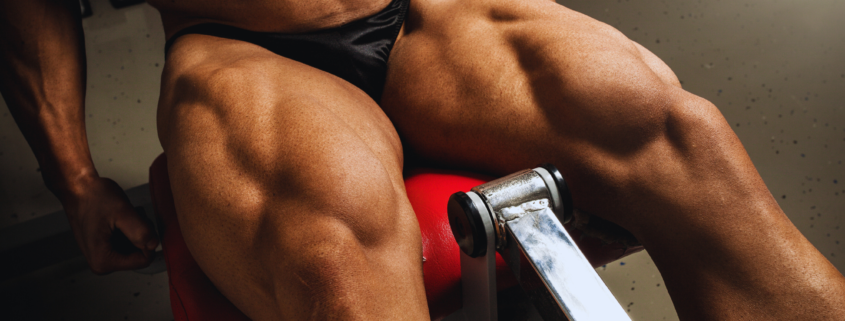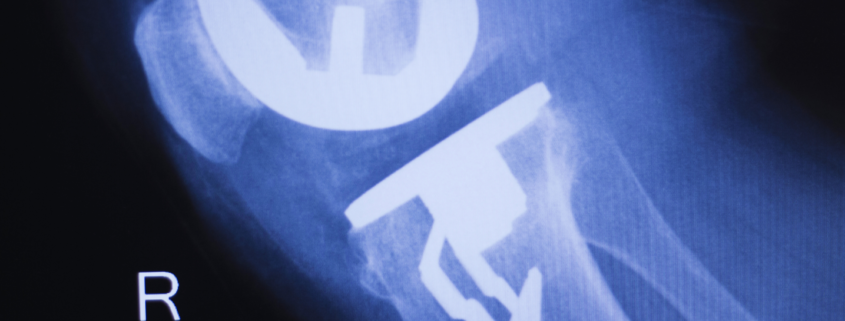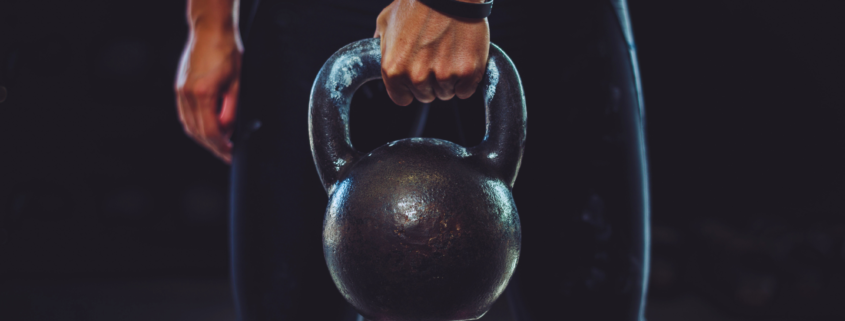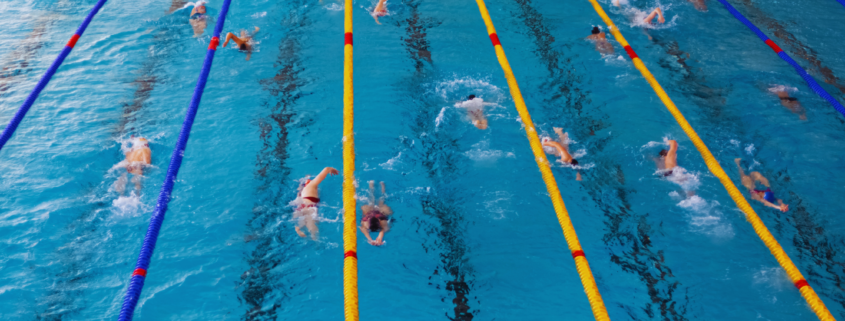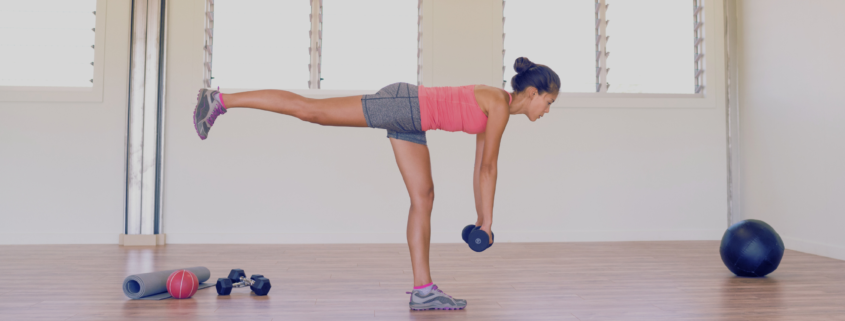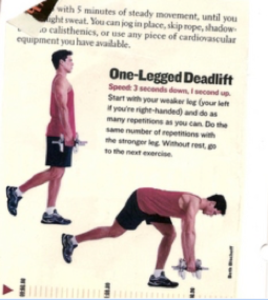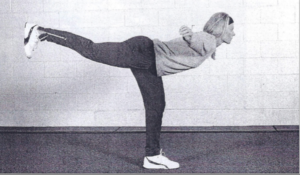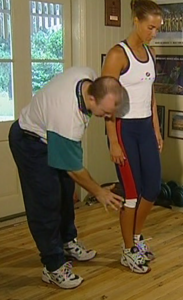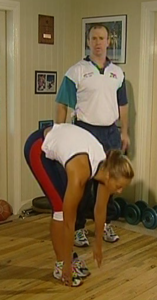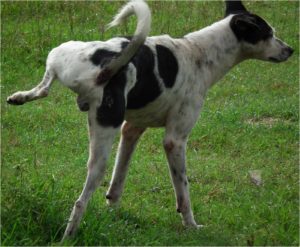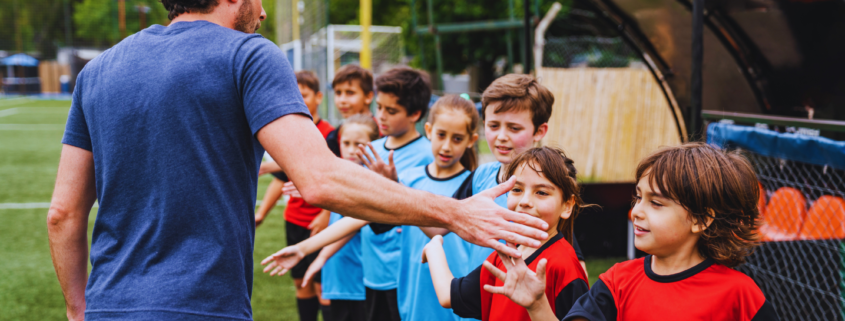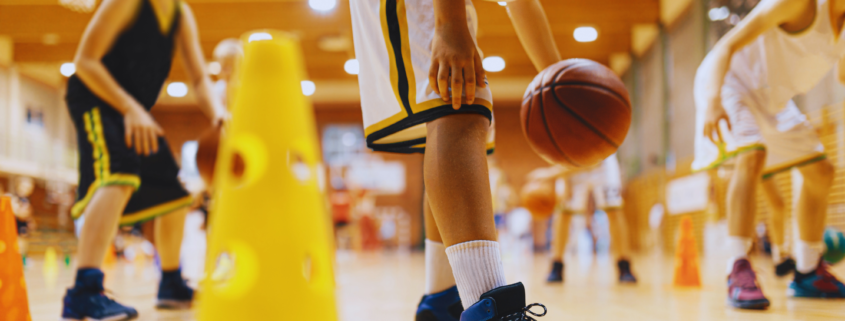Seven factors to reflect upon before picking up another Kettlebell
Over time new ways to train are continually introduced, and in many cases these ‘new ways’ include new training devices. In some cases the ‘new device is intended to replace the conventional external loading options, and in some cases they are intended to supplement them. In most cases the basis for the ‘new’ training devices is that they provide a training benefit that the more conventional external loading does not.
You might never have heard anyone challenge the relevance and appropriateness of Kettlebell training for athletes. That’s okay, nor have I. After many years of reflection and reluctance to do so, I have decided to share my thoughts.
My hesitation to date to speak out is for a number of reasons. Firstly, when one challenges dominant paradigms, you need to put on your Kevlar vests, and this gets boring. Sometimes I would rather retire quietly than deal with the BS that comes from upsetting some well-marketed US ‘guru’…[i]
Secondly, when they attack the messenger, the message can get lost. [ii]
Thirdly there are some good people involved in Kettlebells and it is not my intention to offend them. [iii]
Fourthly, there are some big players whose commercial reliance on the dominant trend is strong, and they will kick back like a mule. I am less concerned about them however, and those who put profit before principle should not be feared.[iv]
So as always, take it or leave it. I have no intention to prevent the power of commercially and ego driven trends from rolling. They have been doing so since the first machine for strength training was invented, and they are not about to stop. I simply intend to give those who care about transfer to sport (and their health) to reconsider their application of this dominant trend in training equipment and associated exercises.
To begin with I go back to my first exposure to a concept that we called ‘Soviet Scam’. Back in the days of the Iron Curtain (and I suggest it continues today) a ‘Soviet Coach’ in the USA realized the commercial value of the word ‘Russian’ or similar. So anything that can have a ‘Russian’ connection has a automatic leg-up in marketing! Back in the 1980s the NSCA of America, under the then Executive Director Ken Kontor, would arrange an annual trip to various Soviet states. I would love to hear their stories about the presence or otherwise of this training device….
So lets get into it with some key, simple yet significant ‘considerations regarding the use of Kettlebells.
Consideration #1 – Load placement relative to the center of gravity of the body
The shape of the upper body posture is potentially compromised when the loading is placed in the front of the body. Put simply there is a risk that the lifter will or chooses to lean backwards. This can compromise the center of gravity backwards and or result in trunk extension, and rising condition contaminating many lifts as they are executed globally that I have described as ‘thoracic extension’.
This problem existed (and continues to do so) in selected conventional exercises such as the military press (shoulder press with bar to front of the head); the Lat Pull-down to the front o the body; the front squat; and the front DB raise, to name a few.
In the image below you can see the impact of the bar placement to the front of the body on the extension of the trunk.
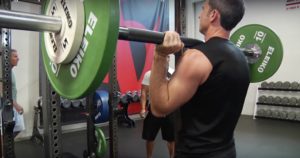
In the below image you can see the increased extension at the middle point of the movement.

In the below image you can see the extension of the spine at the top of the movement, courtesy of the bar travelling to the front of the body during the majority of the lift.
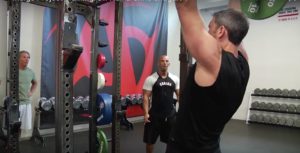
In theory with the bar potentially returning to a position in line with the body, the trunk could be returned to neutral. This would require coaching on this point, and a shape in the body (including flexibility around the neck, shoulders and intervertebral joints) that would allow this.
This movement resulted in so much lean back that it was removed from the Olympic lifting competition schedule. You can see the changes in trunk extension that have occurred from the start to the finish position in the military press pictures provided.
However, if we took a snapshot of say the decade half a century (50 years) ago, what percentage of the exercises being performed by the average lifter placed the load in front of the center of gravity? I suggest the minority. Lets say 10%.
Fast-forward to the last ten years and pose the same question – what percentage of lifts being performed by the masses place load to the front of the center of gravity? I suggest, at least in the case of the Kettlebell, the majority are with the load in front of the body.
The majority of exercises involving Kettlebells occur with the Kettlebell held in front of your body. How does this impact your center of gravity? It shifts it forward. What do you do to compensate? You lean back.
What’s the problem with this? There may be none, if you believe that optimal posture and shape for performance and health is either attained through more weight on the heels than the ball of the feet and shoulder placement behind hip placement.
On the other hand, if you believe that optimal performance and posture is achieve with load distribution through the feet more forward than backwards, and that the shoulders should be above or slightly in front of the hips, then you have a problem.
Specifically what problem you ask?
- From a sporting perspective, unless you are in those hard to find sports where weight on the heels is optimal, you are creating a non-specific adaption in load distribution through the feet.
- From a health perspective, under what conditions are you better off with a lean-back torso posture? You are placing the lower back and hip joints under unnecessary pressure, highly correlated with conditions of pain.
Now I can go on, however at this level of discussions most readers are probably having their values challenged, and more information will not change their determination to kill the concept. For example, I have yet do discuss never transmission impact, use of levers between lower and upper and so on.
What is the impact of this shift in percentage of exercises performed where the loading is in front of the body? I suggest massive. I suggest we are seeing an increase in postural deviations whereby the shoulders are placed behind the hips in the postural plane, resulting in an increase activation or recruitment pattern of engaging the thoracic extensors out of context and inappropriately in all or at least too many exercises
[I just need to pause to adjust the anti-intercontinental missile device around my house before I go any further….]
Consideration #2 – Load placement to the front of the center of gravity exacerbated by the length of the resistance lever
Basic biomechanics suggest that when you extend the length of the resistance lever, you increase the load.
Are any Kettlebell exercises performed with straight arms out to the front of the body? If so how many or what percent of all Kettlebell exercises involve this situation? And does this constitute a greater number of exercises with long resistance levers to the front of the body (in the sagittal plane) compared to the number of similar exercises used fifty (50) years ago? In the absence of accurate statistical date, I am going to speculate or hypothesize that this is the case – that there are more long resistance lever in the sagittal plane exercises in the last 10 years than in the decade 50 years prior.
Exercises with these long levers out in front of the body in the sagittal plan typically result in or are associated with increased use of the thoracic extensors, potentially providing a negative contribution to the ‘thoracic extension’ condition I have drawn attention to.
Building on the first consideration, the impact on the center of gravity is exaggerated by the distance of the load from the body. As many Kettlebell exercises engage in a straight-arm action to the front of the body, the resulting leaning back of the body to accommodate the change in the combined center of gravity magnifies this condition.
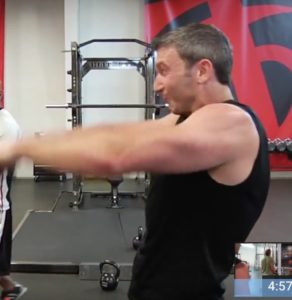
The simple act of shifting the bar from the back of the body in say a standing shoulder press to the front of the body in what some call the military press, is an example of what I refer to. If you are not sure about what I am talking about, try these two positions when you are in a calm, empty cup, reflective mood.
Then consider the further impact of taking that barbell and holding it at full arm’s length in front of the body. For every unit of distance from the unloaded center of gravity of the body, the body leans back a unit.
[I have not been bombed yet, however I appreciate many of you may be still building your counter-attack strategy…..]
Consideration #3 – The shape of the spine in long lever to the front of the body exercise
This third consideration builds on the predominance of standing and swinging the load to the front of the body in an arc movement. Leg drive will create vertical displacement and overcome initial inertia. However to complete an arc movement with load, gravity requires that the trunk must be extended, including extending past vertical.
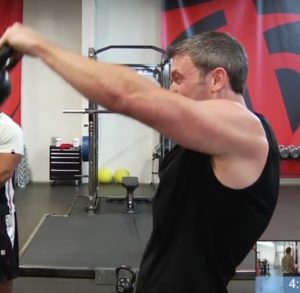
So what’s wrong with this?
Check out the posture and muscle development of a person who has extensive involvement in these movements. Firstly you might note what I refer to as ‘thoracic extension dominance’, where the muscles that extend the middle back are over-developed. Secondly you may note the postural deviation, where the adaption to the rotational movement and thoracic extension results in a permanent leaning back posture.
Now I know there will be some who will say you can complete the rotational arc of a Kettlebell swing without engaging the thoracic extensors beyond the vertical. Sure, and you can also go out an only have one alcoholic drink, but really, how often does that occur…
The conditions I describe in this third ‘challenge’ are exacerbated by fatigue, excessive load, and or the acceptance (in many cases the encouragement) of a cheat movement.
Consideration #4 – The shape of the shoulders in long lever to the front of the body exercise
I begin with again asking the question – are there more ‘to the front of the body with a long resistance arm’ exercises being performed now than a decade later? The second question I pose is what is the typical upper body share in the horizontal plane in these exercise conditions? Are the shoulders ‘square’ or rounded?
When I refer to ‘square shoulders’ I am referring to a condition where the scapula are retracted and depressed and the shoulder musculature block vision of the upper back when viewed from the side. A rounded position the the complete opposite.
I suggest that irrespective of intention, most Kettlebell exercises performed with a long straight arm in front of the body are executed with a rounded upper back shape.
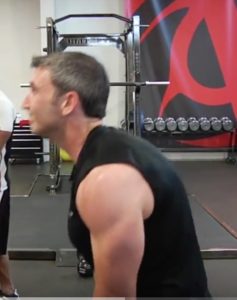
For those who appreciate the importance of the shape of the body under load and the way the body adapts to shape from load, this is critical. My ‘Shape Theory’ (which I had explained in the unpublished article rejected by the high profile internet magazine) which simply put says ‘The shape under which you load is the shape you adopt’, referring to the risk of sub-optimal musculoskeletal adaptations that negatively impact what we call your posture.
Consideration #5 – The downside of unilateral loading affecting the spine
Unilateral exercises, along with a number of other theoretically sound but mis-used concepts such as close chain exercises (feet on the ground), multi-planar movements, combined exercises etc. are a dominant trend in the current landscape.
The rise of rotation through the spine to the extent to which it is evident is a whole new challenge facing the strength training community. There was a time when you had to participate in unilateral sports such as golf or baseball or tennis to develop the musculo-skeletal challenges associated with rotation of the spine. This is no longer the case. You can simply engage in strength training with your local personal trainer, one who has bought blindingly into every ‘cutting edge’ training principle espoused by their leading professional organization, and you can develop and advanced level of dysfunction through rotation of the spine.
Spinal rotations are amongst the toughest musculo-skeletal challenges to solve, and their side effect varied and extensive. They are developed by a high volume of unilateral life or sport exercises (such as those listed above), or exercise conducted in a unilateral fashion – irrespective of the fact that ultimately both sides are trained.
When untrained people under the supervision of those not competent enough to ensure the side effects (and I suggest that is the majority of service providers in the fitness and sport industries) engage in high volume unilateral exercises they typically perform the movement asymmetrically, influenced by existing strengths and weakness. The end result is the exacerbation of their imbalances.
Variables such as dynamic (cheating) movements, excessive load, fatigue, technical breakdown etc. (all of which are in some way associated) accelerate the degradation.
Kettlebell exercises are a ripe platform for this outcome.
Consideration #6 – The impact of rotation on the wrists
Despite dogma teaching to the contrary, I suggest the rotational forces on the wrists from many Kettlebell exercises is both unnecessary and inappropriate. When compared to other devices, it could be argued they provide an advantage.
In this case, the question remains – are unilateral (load in each hand) dynamic movements necessary? For hypertrophy? No. For sports performance? No. For health? No. Of course, that’s just my opinion, so many would say – where is the science? Perhaps you have not been exposed to my belief that ‘research’ is a lagging indicator and by the time (if at all) that ‘research’ provides the answers that anyone with effective intuition can work out in a couple of weeks, there’s been a lot of collateral damage. Are you going to be amongst that collateral damage?
Why not try this simple method – conduct an anonymous, no penalties survey of a group of personal trainers and others doing a Kettlebell training day or weekend course – how do your wrists feel? You won’t need to wait for the ‘research’…Hold, that is research! Just not a paper published in the peer-reviewed journal of your dogma….
Consideration #7 – The impact of the entire musculo-skeletal system
Let’s take a global view of the musculo-skeletal system and its impact on related systems such as the nervous system – an approach well-supported since so many have now been exposed to Tom Myer’s book on Anatomy Trains.
And let’s flip the question. Rather than giving examples of exercises that damage the posture and degrade transfer to sport and health, help me understand which of the more popular and more commonly performed Kettlebell exercises are positive for posture and transfer?
Now I appreciate this question and the answer will be influenced by your definition and understanding of how strength training exercises transfer to life and sport and impact posture. From my perspective this reflection is rarely done, and the real-world, applicable dialogue is rare.
The fact that you can create hypertrophy from Kettlebell exercise meets only those who act on short-term outcomes. I can hit myself on the head repetitively with a sledge hammer and argue for the hypertrophy benefits in the biceps and forearms. But what of the long term impacts?
I suggest that the images used above provide examples of hypertrophy that are heading toward significant, career threatening, quality of life threatening injuries. I know, that’s just my opinion, where’s the ‘research’, blah blah blah. For the economic benefits to the injury rehabilitation, this is cause for celebration – humans willingness to cause self-inflicted damage in the blatant denial of consideration of long term damage.
For an insight in a typical posture model used in and adapted to by the body from the way many Kettlebell exercises are being taught, check out this video! Yes, it is satire. In this instances, study the posture being adopted by the ‘client’. There is a message here.
Conclusion
So there are the first three reasons why you may want to reconsider your Kettlebell involvement. I know, many of you are either going to reject this information outright or find a way to ‘compromise’ so that you can keep doing it, due an range of emotional attachments.
So I put it this way – would you suffer any loss of training outcomes for sport, health or hypertrophy if you let go of your Kettlebell exercises and reverted to less trending, more old school (God forbid, I am just going to say those heretical words…) barbells and dumbbells?
No. At least not in my opinion.
Would it be tough to let go from a ‘what will others think of me’? Absolutely.
Would it be tough to let go because it may mean acknowledging I was sucked in by a non-beneficial trend? Absolutely.
Would it be tough to do if you are teaching your clients Kettlebells one day and the next you are not? Absolutely.
So what’s going to happen?
The majority are going to do just as Schopenhauer[i] suggested many years ago – ridicule and reject what I have said. And that will work, because the majority of your associates will do the same.
And then, when EVERYONE one knows it, and the trend dies off, you can simply pretend that you were aware of what I am teaching and it’s old news now, who cares. And really, everyone else will be so embarrassed and looking to hide their prior association with the Kettelbell that no-one will be looking in your back yard so it will be all good.
Except for the price you pay in your body continuing to do Kettlebells, waiting for EVERYONE to wake up…..Oh, and if you are a personal trainer or coach, the price in the body of your clients and athletes…..
WATCH VIDEO
Watch a short video discussing some of the considerations covered in this blog article here.
SIDE BAR NOTES
[i] “All truth passes through three stages. First, it is ridiculed. Second, it is violently opposed. Third, it is accepted as being self-evident.” – Arthur Schopenhauer
[i] …Like the time I had the audacity in a New York seminar in the late 1990s to suggest that a chin up does not balance out the bench press (this was in the days when the only publications of the ‘Lines of Movement’ concept were my own). Wow, did that upset the local guru! What happened to me in the next few years may be of little interest to you, but what happened to you may – because instead of embracing the flaws in teaching, this guru gave you the ‘scapula chin up’….and the problem remained….
[ii] …Like the time in a Boston seminar that I laid out concepts such as loading is over-rated and why use external loading when most athletes struggle with their own bodyweight, and here are some unique original unilateral lower body exercises. The local ‘guru’ held a union meeting at the break, and took the majority of the attendees out of the seminar as a protest against the ‘utter rubbish’ I was teaching, before publishing a series of books on the content. What happened to me following that event is of little interest to you. What happened to you should be, as you all now lift your back leg up when you do my single leg stiff, legged deadlift….
[iii] …Like the time a prominent US internet magazine owner tried to entice me with money and when I said no, he said ‘Damn it, there are only two of you that have ever said no to me!’ […the other person was involved in Kettelbells!…] What happened to me is of no interest to you, but what happened to you should be. One of the ‘replacement’ writer had a massive Pinocchio nose-growing challenge and you went off and followed the training guidance….
[iv] ….Like the unsolicited article I wrote and submitted asking no payment, to a particular high profile internet website. I am not sure if it killed the deal, but I left my notes at the bottom of the article, and they were summarizing the ‘interesting’ things I had seen of their writers performing a series of exercises with Kettlebells….I never heard back. What happened to me is of no interest to you, but what happened to you should be because you were denied the opportunity to review and reflect on what you are doing with those Kettlebells…
Copyright 2017 Ian King & King Sports International Inc. All rights reserved.


